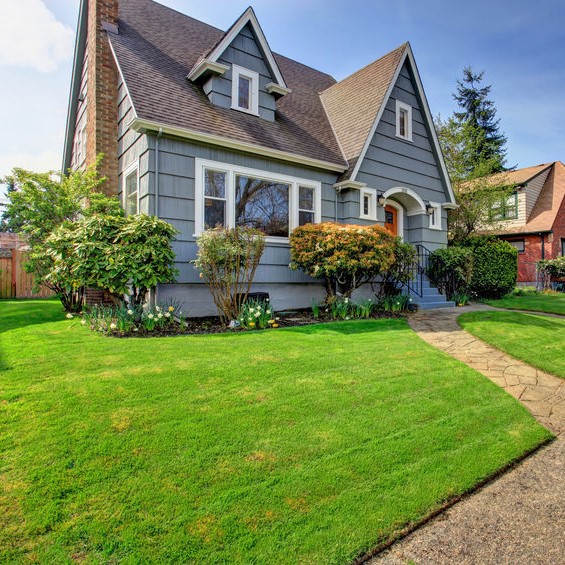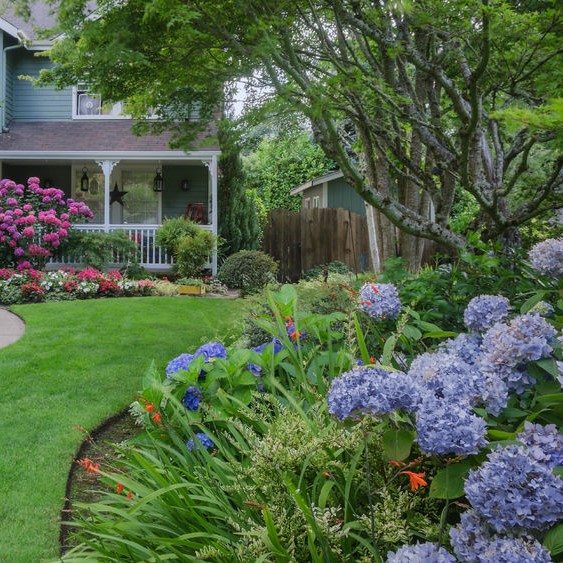
Beautifying your landscape
Keeping your yard mowed and edged, the shrubs trimmed, and the tree limbs managed makes for a nice yard. These are “must do” things. Then there is that home landscaping that can take your lawn, and home, to a whole other level!
You can do this for your own self enjoyment too, not just to keep up with the Joneses (although that helps the entire neighborhood). Nor do you need to only do this if you’re placing your house on the market. Home landscaping is something you can enjoy and take pride in.
Are you not sure about what home landscaping things to do for your home? Surf the internet or watch any of the landscaping or lawn and yard television shows and you’ll find a plethora of home landscaping ideas. Scout the neighborhood and see what’s going on everywhere else, including other neighborhoods besides yours.
How do you do basic landscaping?
So, you’re new to the world of home landscaping? Get ready to have some fun! When it comes to designing an outdoor space, there are a few home landscaping basics you need to keep in mind. First, determine how you will use this space, then consider the shape and style of that space to create your home landscaping.
- What are you looking to get from this project? A play area for the kids or a quiet place to relax, or maybe both? Do you want an herb and vegetable garden, or flowers? Make a list of what you want and what you need to make that happen. Create a generalized sketch, and this is where you start.
- Take an assessment of your yard, like when and where is it the sunniest, does it get light breezes or powerful winds? You should place seating where the wind doesn’t blow you away, nor does the sun bake you to a crisp, but yet, you want to be in the sun on a crisp day. Can you get water to every corner and edge of your yard?
- Take a seat in your yard before you dig. Sit there for a few minutes, then move to another spot and try several spaces at different times of the day and evening. What is the focal point of each place you sit? Are these places able to interact with other places in your yard? Are there existing walking paths to workaround?
- The most elegant of all things is often the simplest things, or as some would say, too much of a good thing isn’t good. Choose things that matter to you, from the framework that doesn’t block the way to your home. Intuitiveness is often the best design.
- Borrow views and focal points from other houses on your street or a different neighborhood. Make a grouping of trees your focal point that will provide shade during the summer. Flower trees can be decorative and aromatic.
- What plants are your favorites? Plants make a garden, so make a list of the ones you like the most and see how best to fit them into your earlier assessment. Will they grow with shade, or do they need sun? Are you going to be able to water them as needed, don’t consider just your time, but access to the water?
- The change should be embraced, so as you plan and plant your home landscaping, keep in mind it may need to change as time moves on.

What do I need to know before landscaping?
Planning your home landscaping will make for a last curb appeal and a thriving yard. Here are 10 tips to help you get started and keep going:
- Strong home landscape edging is important. It creates barriers between the lawn, the flowerbed, and the garden. Home landscaping edging can be anything from plastic to steel or something abstract!
- Most home landscaping ideas front yard or backyard include mulch. Some is good, too much is not. Add mulch to maintain the soil and add some decorative color, but don’t let it overpower your flowers and plants and keep it back from the tree trunks.
- Good soil is a must. If the soil is packed, the roots won’t penetrate and grow. Till it up or bring in fresh soil.
- Grouping is splendid in threes or fives. This will give your garden a look of fullness from afar, and if the five plants all bloom a different color, even better! Plant so that you have some color blooming year round.
- Yes, your home landscaping needs water, but not too much. Use soil to build up any low area so that water isn’t pooling up.
- Consider the sunlight each plant will get and how much it needs (or doesn’t need).
- Know your limits when it comes to maintaining your home landscaping. The more you plant, the more you must tend to.
- Most important, know your budget! Home landscaping can get away from you if you’re not careful. Determine how much you can spare to spend, how much you can spend for maintenance and be firm to stick with it.
How do you arrange plants in landscaping?
There are two straightforward rules for home landscaping designs when it comes to arranging flowers and plants.
- Plant individual plants so they will touch once they have each matured.
- Allow the masses of plants to overlap and fill gaps and sizeable areas so there is a continuous flow.
What can I plant near my house foundation?
Annual flowers and small root plants can be planted within six inches of your home’s foundation. If your home landscaping includes bushes or shrubs, they should be planted a minimum of one foot away from the foundation. Now that you have a direction to get started with your home landscaping, get it done, and then sit back and enjoy your work! Get the home landscaping you need in Dallas-Fort Worth, TX. Dial 817-396-0125 today.
